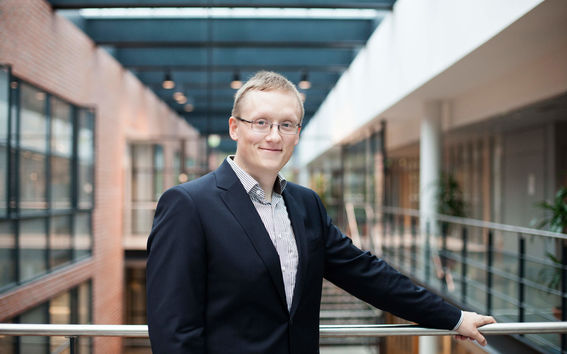Get to know us: Assistant Professor Antti Karttunen

Who are you and what do you do?
My name is Antti Karttunen and I’m an Assistant Professor at Aalto University, Department of Chemistry and Materials Science. I lead the research group of Inorganic Materials Modelling and teach in our BSc and MSc programmes. I’m teaching courses such as Programming for Chemical Engineers, Solid State Chemistry, and Functional Inorganic Materials.
What got you interested in inorganic materials modelling?
In our research group, we investigate inorganic materials using quantum chemical computational methods. I became interested in computational chemistry during the first year of my chemistry studies at the University of Joensuu. My studies included a six-week research project in a research group and my project involved quantum chemical studies of hydrated copper ions. Computational chemistry was an ideal combination of my two favorite topics, chemistry and computers. After the research project, I decided to focus on computational chemistry.
During my PhD studies, I investigated inorganic nanomaterials with quantum chemical methods and this research direction led into a postdoctoral research period at the Technical University of Munich. During my postdoc, I realized that a combination of computational and experimental solid-state chemistry is a fascinating field. Since then, the main focus of my research has been on inorganic materials.
What is the main goal of your research group?
We research a number of different topics since we have many collaborative projects with experimental groups. However, the main goal of our modelling research, is to discover new inorganic materials for improving energy efficiency. For this purpose, we are investigating for example thermoelectric and piezoelectric energy conversion materials.
You are trying to combine virtual reality with teaching, how far along are you now?
Our AALTOLAB Laboratory Safety Training Platform is based on a virtual laboratory concept and it is already in production and has been completed by over 600 students and staff at Aalto University. We have also released the first version of our VRChem molecular builder which enables students to build and model molecules in virtual reality.
What are the benefits of virtual reality in teaching or your own research?
Virtual laboratory spaces based on 360 panorama images provide a learning environment that makes lab safety education fun and effective. It is also very flexible from the point of view of students and teachers: the students can complete the virtual reality-based course whenever they want, and the workload of the teachers is roughly the same for 10 or 100 students. Our other project, molecular building and modelling in virtual reality makes it a lot easier for students to understand the importance of three-dimensional structure in chemistry. Molecules and materials are three-dimensional and to fully understand their reactivity and functionality, we need a good understanding of their 3D structure.
What is the most and least interesting thing about your research field?
For me, the most interesting thing is the unlimited versatility of inorganic materials. The periodic table offers endless number of possibilities to discover new materials with beautiful atomic-level structures and fascinating properties. Some of the materials can be predicted before synthesis either by computational chemistry or chemical intuition, but very often new materials are simply discovered by accident.
If I must name something as “least interesting”, let it be “Science by Press Release”. By this I mean the unfounded hype about research results that has increased exponentially in the past 10-20 years. Especially in energy materials research, people continuously make huge press releases about “amazing” new discoveries that will revolutionize for example energy storage. Most of this hype is just noise and will barely be remembered until the next “amazing” discovery. This unfounded hype gives incorrect impression of scientific research, which is a collaborative effort better described as evolution, not revolution.
What would you tell a high school student about your research field?
The periodic table offers an endless number of possibilities to discover new materials with beautiful atomic-level structures and fascinating properties. Inorganic chemistry offers us the means to harness the periodic table for the benefit of the mankind. For example, solar cells generating renewable energy, batteries storing this energy, and electronic devices controlling all this exist thanks to inorganic materials research.
This interview is conducted by Mikaela Kumlin who has been working during the summer at the School of Chemical Engineering.
Read more news

HRH Princess Maha Chakri Sirindhorn of Thailand visited Aalto University
During the visit, HRH and her delegation met with Aalto students and explored various activities.Summmer break in HR service point and new opening hours starting from 6 August 2024
HR service point is closed on 28 June - 5 August 2024. New opening hours are tuesday - thursday at 12.00 - 15.00 starting from 6 August 2024.Please note that the opening hours will change starting from 6 August 2024.

68 doctors, five honorary doctors - see photos from the conferment of Doctoral Degrees in Technology
The Ceremonial Conferment of Doctoral Degrees in Technology 2024 took place on Friday 14 June at Dipoli.